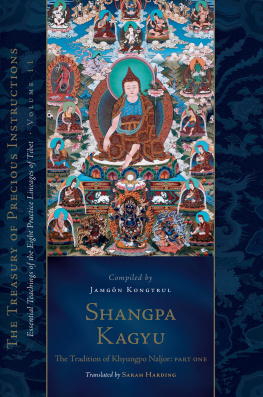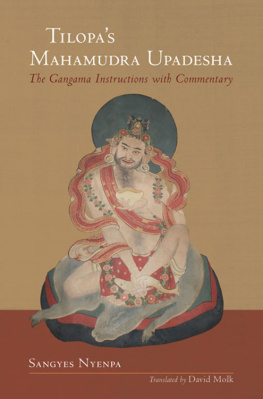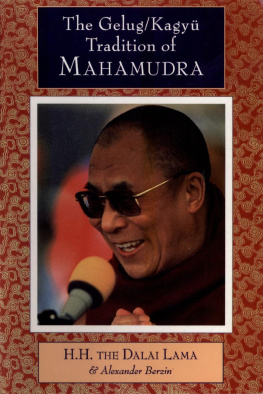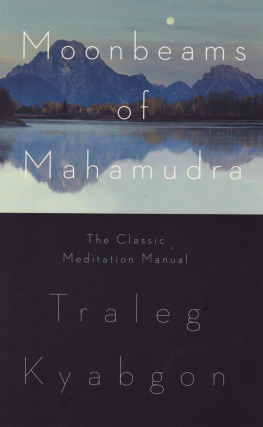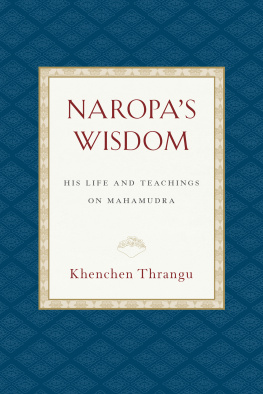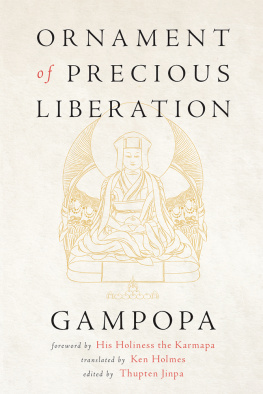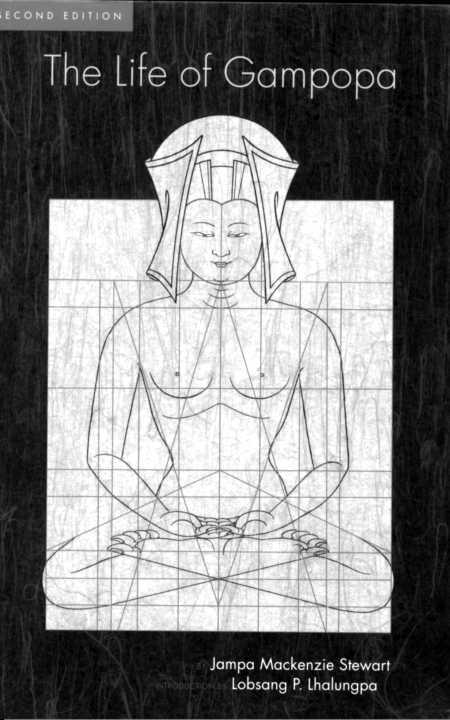

To Khenpo Karthar Rinpoche, kind root lama; Khenpo Konchog Gyaltsen Rinpoche, spiritual friend and master; and to Adam Mackenzie Stewart and Gabriel Drews Stewart, my beloved sons.

by Jampa Mackenzie Stewart
Introduction by Lobsang P. Lhalungpa





Biographies of saints are written to inspire us. They depict the struggles and ultimate victory of people who have traveled the path before us. Good biographies give us role models for our own spiritual work, and incite us to greater efforts than would the mere words of a dissertation or sermon. They show us that it is the practical application of the practice-the actions of such saints-that are the teachings, and not just their words.
Several years ago my root lama, Venerable Khenpo Karthar Rinpoche, gave a teaching on the lives of the Kagyu forefathers, at Karma Triyana Dharmachakra in Woodstock, New York. This was the first time that I had heard the story of Gampopa's life. I was greatly moved by the fascinating tale of this yogi-monk who inherited the robe and bowl of the great Milarepa, and who gathered around him an unprecedented 51,600 monks and over 500 yogi disciples. These included the first Karmapa and the renowned Phagmo Drupa. Since Gampopa was the father of all the Kagyupa lineages, known as the Four Great and Eight Younger Lineages (which are described in the appendix by Lobsang Lhalungpa), I felt that his story deserved a wider audience.
Over the last century biographies of other forefathers in the Kagyu lineage have been translated and published: Naropa, Marpa, the Karmapas, and recently, Tilopa. It therefore seemed strange to me that a complete biography of Gampopa had not been published in English, and even more strange because Gampopa's writings were some of the earliest works to be translated from the Tibetan.
Walter Yeeling Evans-Wentz and Lama Kazi Dawa Samdup translated Gampopa's Supreme Path: The Rosary of Precious Gems in Tibetan Yoga and Secret Doctrines, one of the first Tibetan Buddhist teachings offered in English as serious yogic practice for personal transformation. However, this was a short work, well hidden in the midst of the more exciting and exotic practices of the Six Yogas of Naropa, the Chod practice, and the Yoga of the Great Symbol (the Four Yogas of Mahamudra.) Although I spent many hours perusing that book, it was years later that I discovered in a casual conversation that The Rosary of Precious Gems was written by the great Gampopa.
Similarly, a short yet excellent biography of Gampopa is presented by Garma C. C. Chang in Volume II of The Hundred Thousand Songs of Milarepa. Yet, as Milarepa himself is the focal point of that book, Gampopa's life story is naturally eclipsed by the stories of his guru.
The work by which Gampopa's name is perhaps best known in the West is Herbert V. Guenther's translation of Gampopa's great work, The Jewel Ornament of Liberation. Therein Gampopa presents a brilliant outline of the Stages of the Path to Enlightenment (Lam Rim) in the traditional Kadampa fashion, combined with the Mahamudra lineage view inherited from his guru, Milarepa. However, in this work the translator provides only one scant page of details on the life of Gampopa.
Other partial accounts of Gampopa's life story have been translated into English, to which I am greatly indebted in preparing my own rendering. Venerable Khenpo Konchog Gyaltsen Rinpoche included a brief but excellent biography of Gampopa in his book, Prayer Flags: The Spiritual Songs of Lord Jigten Sumgon. He also included a longer biography in his work, The Great Kagyu Masters: The Golden Lineage Treasury (edited by Victoria Huckenpahler), from which I drew much valuable material, in particular the miraculous stories included in chapter eighteen of this book. The Rain of Wisdom, translated by the Nalanda Translation Committee under the direction of the late Chogyam Trungpa Rinpoche, included "The Life and Songs of Lord Gampopa" and "Lord Gampopa's Song of Response to the Three Men of Kham" among the songs of the great Kagyu lineage masters. As before, Gampopa's story lies hidden among many others in each of these versions. A very short segment on Gampopa's life also appears in the recent work, A Garland of Gold: The Early Kagyu Masters in India and Tibet by Jampa Thaye. I also found two short stories about Gampopa in Tantric Practice in Nyingma by Khetsun Sangpo Rinbochay, translated and edited by Jeffrey Hopkins, a commentary on Paltrul Rinpoche's Kunzang Lamay Zhalung, which are included in chapter eighteen. I am also deeply indebted to Khenpo Karthar Rinpoche for his oral transmission on the life of Gampopa.
Even in Tibetan, I know of no single complete biography of Gampopa's life. Of the versions I have mentioned, some included great detail on the early part of Gampopa's life but little or nothing about his later life. In other versions the reverse was true. Areas that would be covered in a single sentence in one version receive several pages in another. It has been my intention to present as complete, accurate and detailed an account of Gampopa's life as possible. To prepare such a comprehensive English biography I have researched, compiled, translated, and edited many different sources.
In most of these sources the stories were in complete agreement, but in others the accounts were puzzlingly divergent. For example: Prayer Flags gives Gampopa's mother's name as Ngalsa; in the Hundred Thousand Songs of Milarepa his father had two wives, and it is unclear whether Yunlaza or Sangden Dranma was his actual mother; while Guenther, in The Jewel Ornament of Liberation, gives Gampopa's mother's name as Somoza Chelcam! Other differences in each account concerned the age at which Gampopa married, the duration of his marriage before his wife's death, and where and with whom he took monastic ordination.
In all these cases I sought to present the version or combination of versions that seemed the most logical and consistent and allowed the story to flow best. For I believe that a story should be told well, and I have sought to fulfill the role of storyteller, and not just translator and editor. There are, for example, many tellings of the life and legend of the Buddha. Each has its own color and flavor, in accordance with the intuitions and talents of the particular storyteller.
To aid me in these efforts I received the Guru Yoga empowerment of Gampopa from both Venerable Khenpo Karthar Rinpoche and His Eminence Jamgon Kongtrul Rinpoche, whose blessings have helped guide me to an inner sense of the man Gampopa. These blessings have been especially helpful in dealing with those periods in Gampopa's life in which details were sparse or disparate in the existing accounts.
Next page

